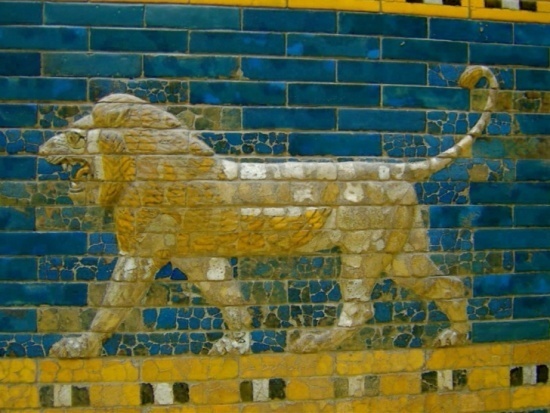"And the Time Came" -- Daniel 7:15-28
 Wednesday, October 4, 2017 at 11:57AM
Wednesday, October 4, 2017 at 11:57AM 
The Fourteenth in a Series of Sermons on the Book of Daniel
Daniel’s vision in chapter 7 of the prophecy which bears his name, maps out the future of the four great ancient middle-eastern empires with uncanny accuracy. Daniel’s vision dates from 550 BC–the first year that Belshazzar was king of Babylon–but covers historical developments until the rise of the Roman empire four centuries later. In this amazing vision, Daniel sees four fierce and frightening beasts which represent the same successive empires which Nebuchadnezzar had seen in the vision of the metallic statue which YHWH had given to him (and recounted in Daniel 2): the Babylonian empire, the Persian empire, the Greek empire (under Alexander the Great and his successors), and then finally the fourth and most powerful and frightening beast of all, the Roman empire. What makes Daniel’s vision so much more than a mere lesson in ancient near-eastern history is that this vision is given five centuries before these events actually occur. But Daniel is also given a vision of the heaven court in session. He sees one whom he describes as “the Ancient of Days” presiding, with one “like a Son of Man” being led into his presence, possessing a glory beyond all human comprehension, with thousands and tens of thousand attendants. Daniel sees what so many of God’s people across the ages have desired to see–a glimpse of what heaven is like and what transpires in God’s presence.
What readers of the New Testament know, which Daniel did not, is that this one like “a Son of Man” whom Daniel sees is none other than Jesus Christ. When interpreting Nebuchadnezzar’s dream of the metallic statue, Daniel describes what he sees (Daniel 2:44–45). “And in the days of those kings the God of heaven will set up a kingdom that shall never be destroyed, nor shall the kingdom be left to another people. It shall break in pieces all these kingdoms and bring them to an end, and it shall stand forever, just as you saw that a stone was cut from a mountain by no human hand, and that it broke in pieces the iron, the bronze, the clay, the silver, and the gold. A great God has made known to the king what shall be after this. The dream is certain, and its interpretation sure.”
Coming a generation later, Daniel’s dream recounted in chapter 7 reveals the missing element of Nebuchadnezzar’s dream–who or what is the stone which crushes the metallic statue, specially the fourth empire? Daniel reveals that it is YHWH who directs all of human history to the ends to which he has determined through the person and work of the Son of Man (Jesus)–the mysterious stone seen by Nebuchadnezzar. No human empire, no matter how great it may appear to human eyes, will escape YHWH’s verdict which will be meted out in the heaven court on judgment day, when Jesus returns to raise the dead, judge the world, and make all things new. God will crush all the kingdoms of this world which rise to challenge his divine authority. Daniel, certainly, did not comprehend the full meaning of what he sees in his vision, but with the 20/20 vision of New Testament hindsight, we know that what Daniel saw was none other than the heavenly glory of the Lord Jesus–that “one like a Son of Man.”
In both visions (Nebuchadnezzar’s in chapter 2, and Daniel’s in chapter 7), the fourth empire (Rome) plays the critical role as a future oppressor of God’s people. The fourth beast (empire) of Daniel’s vision is the most frightening of all and does terrible harm to the people of God. Yet YHWH will inevitably bring each of these empires to ruin (including Rome). The reassurance that God controls and judges these empires is of great comfort to Daniel and the Jewish exiles then in Babylon who have been under the oppressive heel of a pagan empire (Babylon–the first beast) which forcibly took many of them from their homes in Judah 70 years or so previously.
To read the rest of this sermon: Click Here


Reader Comments